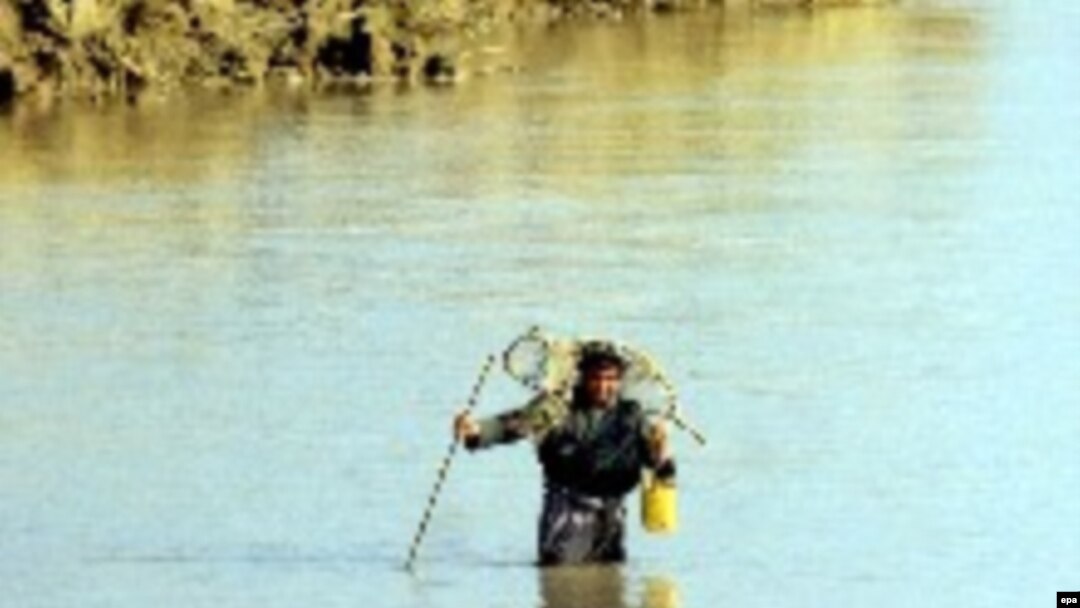UNITED NATIONS, March 10, 2006 (RFE/RL) – The authors of the 2006 World Water Development Report say the Central Asian states offer a striking example of the urgent need to find fairer ways to share the essential resource of water.
“This way Central Asia is really a microcosm for so many other parts of the world," says Sandra Postel, director of the Global Water Policy Project. "It’s got two major rivers, the Syr Darya and Amu Darya, that are flowing through several countries on their way to the Aral Sea and the challenge -- in the face of population growth, economic growth, the need for food production, the need for energy production -- is [for] the countries to figure out how to share this water in a fair way. And may be even more importantly -- to share the benefits of this water in a fair way.”
Poor Irrigation Practices Downstream
Postel added that the downstream countries have compounded their water problems by adopting inefficient approaches to irrigation.
“[It is] very important that the downstream countries, Uzbekistan and Turkmenistan, put more effort into improving agricultural water efficiency, irrigation efficiency," she said. "The problems of wasteful use of water in agriculture [and] of salinization of the soil [are] an ongoing problem that very much needs attention by those countries.”
The Aral Sea Disaster
The most visible result of these combined problems is what has happened to the Aral Sea.
The report says that loss of water reaching the sea -- actually a fresh-water lake -- has caused it to lose 75 percent of its volume since 1960.
At the same time, the inflow of excessive chemicals from agricultural runoff has caused a collapse in the Aral Sea fishing industry, a loss of biodiversity and wildlife habitat, and an increase in human pulmonary diseases and infant mortality.
Whereas in 1959, the report says, the Aral Sea fisheries produced 50,000 tons of fish, by 2004, fishing was almost nonexistent.
The sensitive Turgay River forests, once a storehouse of biodiversity, the report says, have been reduced to marginal fragments in four nature reserves in Uzbekistan.
Trying To Salvage At Least Something
“The Aral Sea is still getting smaller and smaller," said Gordon Young, coordinator of the report at a New York conference on March 8. "It can’t get an awful lot smaller, and it is primarily to do with the abstraction of water, particularly for cotton farming. The situation is not new; it is just getting worse. There’s now a scheme afoot to try to build a dike around the northern part of the sea so at least that part is preserved longer than the rest.”
The efforts are aimed at salvaging just half of the Aral Sea – the smaller northern half – created when the Aral Sea split into two parts in 1987.
Postel said that restoring the lake to its pre-1960 condition is out of question because of the irreversible ecological damage.
“[They are] allowing more Syr Darya water to flow in and dikeing off that northern sea from the southern sea so the small Aral would get more water and have an opportunity to restore some of the ecological benefits that were there for the entire sea before," Postel said. "I think it’s an attempt to salvage something, but certainly we’re not going to see the Aral Sea as we once knew it.”
Turning to the larger question of how water resources are used worldwide, the report says that governments and societies must change the way the view water as a resource.
The authors say water -- especially drinking water-- is so important that it should be regarded as a public good. That means ownership of the resource should remain in the public’s hands through the instrument of governments, either at the state, provincial, or municipal level.
The report says private companies can and should play a role in managing the delivery of water to users -- in setting up delivery systems, laying pipes, and installing taps and meters.
In 2002, the UN declared that the right to water for personal and domestic use should be recognized as a basic human right. This right is generally accepted within the UN system, but it is a hard sell in most of the developing world.
Governments of countries that are largely arid or have extensive drought periods are reluctant to recognize such a right because of its potential to create political instability.


